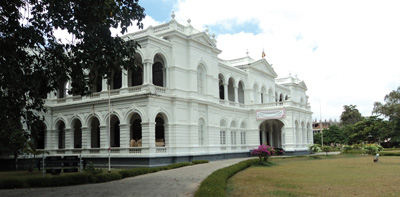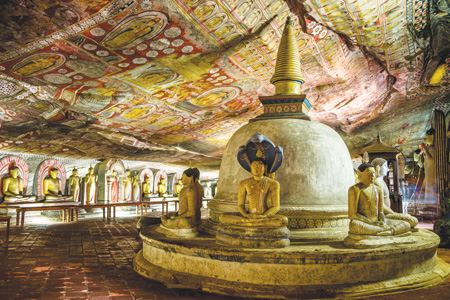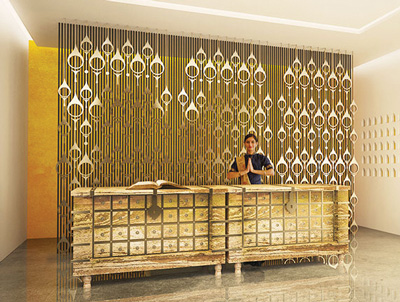Insufficient hardware to support large-scale events continues to be a bugbear for Sri Lanka’s MICE players, writes Feizal Samath
A new convention centre in Sri Lanka is on the cards while the industry has pulled off a major coup in cajoling a top French travel association to hold its congress in the country. The congress of the Syndicat National Des agents de Voyages in October will bring over 500 agents and their guests to the country.
These should be enough reasons for Sri Lanka’s MICE stakeholders to celebrate but the mood is still sombre as current and upcoming event infrastructure is seen as being inadequate to support their desire for mega events.
Sri Lanka presently offers the Bandaranaike Memorial International Conference Hall (BMICH) and the Sri Lanka Exhibition & Convention Centre. The former houses multipurpose facilities for meetings and a separate exhibition centre, with the main hall capable of accommodating only 1,500 seats. The latter, managed by Singapore-based Pico Group, can also accommodate 1,500 pax but lacks proper parking facilities. Furthermore, this facility will likely be demolished once its contract ends in three to four years, to make way for the construction of a financial centre.
Vipula Wanigasekera, a MICE veteran and former general manager of the state-run Sri Lankan Conventions Bureau (SLCB), lamented: “No one really understands conferences and exhibitions. There is no proper strategy and MICE is seen as a small component of travel, just another add-on.”
Expressing frustration with the upcoming convention centre, which will be only 1.6 hectares in size, Wanigasekera said: “The space allocated for it is, in my view, only enough for parking!”
The new venue, to be located outside of capital city Colombo, is the government’s response to urgent calls from local MICE stakeholders to resolve the capacity crunch.
For years now, local MICE stakeholders have been demanding a bigger convention centre with capacity for over 5,000 people, break-out rooms, areas for special dinners as well as entertainment and residential facilities. They bemoaned that while successful MICE cities like Singapore and Dubai can accommodate more than 10,000 to 15,000 pax in one of many venues, Sri Lanka’s largest conference centre can seat a meagre 1,500 guests.
So, in November, the government set aside three billion rupees (US$20.6 million) for the construction of the country’s third venue. Today, a blue-print is being prepared.
But experts argue that this is simply not enough, especially with the impending loss of the Sri Lanka Exhibition & Convention Centre.
A worried Ziyan Ameen, president of the Sri Lanka Association of Professional Conference, Exhibition & Event Organisers (SLAPCEO), told TTGmice that the remaining venues would be “miniscule compared to our competitors” who have several larger multipurpose venues.
What is rosy, however, is the state of Sri Lanka’s incentive event business which has been flourishing. Trade players expect this segment to continue to see good growth, thanks to the country’s diversity of locations and attractions.
Adding another obstacle to Sri Lanka’s MICE quest is the high taxes. According to the MICE head of a local firm, taxes on bringing a foreign musician or band into Sri Lanka can amount to 46 per cent of the entire event cost.
Local MICE stakeholders want more unique venues in Sri Lanka
and have suggested making existing attractions, such as the
Colombo National Museum, available for event hire Picture by
saiko3p/shutterstock
Accommodation in Colombo, where most of the events are held, is also woefully inadequate to support large-scale meetings. There are now about 4,000 rooms in the capital.
New hotel brands like Shangri-La, Sheraton and Hyatt that are coming into the capital will add 1,000 rooms to the room inventory, but the numbers are still insufficient to make Sri Lanka a worthy global competitor for big events.
The largest meeting in Colombo was in January 2015 when Phillips India held its convention for 1,500 guests. Attendees had to be housed in three to four hotels while meetings were hosted in two hotels at different times.
What the country needs is a stronger convention bureau with more funding and a good strategy in place, according to Ameen.
“We (also) need special venues for theme dinners, for example the Colombo National Museum grounds or a sports complex that can be transformed into something exciting. We don’t have (such venues) at the moment,” Ameen added.
Although Prema Cooray, SLCB chairman has acknowledged these shortfalls, he remains excited about Sri Lanka’s MICE future, confident that India will continue to be the industry’s key to success.
Cooray said: “Our focus will be to concentrate on India (as always). The potential for MICE is huge and (the market) is advantageous to us as we are (located) very close.”
He added that many international companies have moved their corporate headquarters to India from Singapore or Europe, which will encourage more business travels from India.
The southern cities of India – Hyderabad, Chennai and Bangalore – which are just a short flight from Colombo will be the centre of SLCB’s marketing efforts. Cooray said access is affordable and frequent, as SriLankan Airlines flies 110 times a week to these cities.

Sri Lanka’s Golden Temple of Dambulla is a UNESCO World
Heritage Site
{Taking Numbers}
34
The number of international conventions and meetings in Sri Lanka this year that SriLankan Airlines is supporting as official carrier
61
The number of overseas tradeshows and fairs that Sri Lanka Tourism is taking part in to promote the country
145,773
The number of Indian arrivals in the first five months of 2016. India is Sri Lanka’s largest source market and biggest provider of MICE footfalls
{Developments to Watch}
![]() Cinnamon Hotels & Resorts has become the first hotel chain in Sri Lanka to establish a Chinese-friendly environment, encouraged by the vast increase in Chinese inbound numbers. Two hotels in the chain – Cinnamon Grin both Mandarin and English, trained its front-line staff in basic Mandarin, and dedicated an entire floor in both hotels to Chinese guests. Rooms on this floor feature Chinese décor, Chinese tea and reading materials in Mandarin.
Cinnamon Hotels & Resorts has become the first hotel chain in Sri Lanka to establish a Chinese-friendly environment, encouraged by the vast increase in Chinese inbound numbers. Two hotels in the chain – Cinnamon Grin both Mandarin and English, trained its front-line staff in basic Mandarin, and dedicated an entire floor in both hotels to Chinese guests. Rooms on this floor feature Chinese décor, Chinese tea and reading materials in Mandarin.
![]() Cinnamon Air’s commencement of daily flights from Colombo to Hambantota in early June has vastly improved access to Sri Lanka’s developing southern coast. While it used to take 2.5 hours to journey between the two points, the flight cuts it down to just an hour, a convenience much appreciated by time-strapped business travellers and event attendees.
Cinnamon Air’s commencement of daily flights from Colombo to Hambantota in early June has vastly improved access to Sri Lanka’s developing southern coast. While it used to take 2.5 hours to journey between the two points, the flight cuts it down to just an hour, a convenience much appreciated by time-strapped business travellers and event attendees.
![]() Opened earlier this year in the former war-devastated northern town of Jaffna, the 55-keys Jetwing Jaffna is the destination’s first upmarket hotel. Its ability to accommodate small meetings with 30 to 50 guests means it will help attract corporate interest to Jaffna’s unspoiled beaches and rich cultural offerings. Jaffna, meanwhile, is looking to build up its tourism sector.
Opened earlier this year in the former war-devastated northern town of Jaffna, the 55-keys Jetwing Jaffna is the destination’s first upmarket hotel. Its ability to accommodate small meetings with 30 to 50 guests means it will help attract corporate interest to Jaffna’s unspoiled beaches and rich cultural offerings. Jaffna, meanwhile, is looking to build up its tourism sector.






















